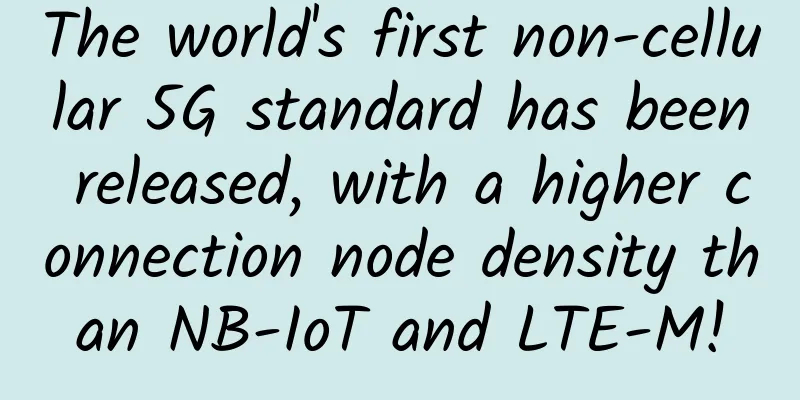Private 5G is key to improving safety, efficiency and productivity in the mining industry

|
Mining is one of the most important industries in modern civilization. It employs hundreds of thousands of workers and provides the mined materials needed to build roads and hospitals, construct cars and homes, manufacture computers and satellites, and even generate electricity. However, the industry also faces challenges due to the harsh working conditions in mines. For example, according to the International Labor Organization, miners make up 1% of the global workforce, but are responsible for 8% of fatal accidents. This is why it is crucial to adopt the right technology to ensure the safety of miners and the efficiency of the mining process. Private 5G networks are a new development that could transform the mining industry, bringing faster, more reliable, and more secure connectivity to remote mine sites. In this article, we’ll discuss the use of private 5G networks in the mining industry, its benefits, and how private 5G technology can improve mining operations. What are private 5G networks?A private 5G network is essentially a local area network (LAN) that uses 5G technology to provide high-speed wireless connectivity within a specific area. The main advantage of private 5G networks over traditional Wi-Fi or cellular networks is that they offer increased reliability, speed, and security. Private 5G networks use dedicated spectrum and can be tailored to the specific needs of mining operations, providing a level of flexibility and control that is not possible with public cellular networks. The benefits of using dedicated 5G networks in the mining industry1. Connect various devices and sensorsIn mining operations, many devices and sensors need to be connected to ensure safety and efficiency. This includes everything from underground sensors to self-driving cars and drones. With private 5G networks, all of these devices can be seamlessly connected, providing real-time data and insights to improve the efficiency and safety of mining operations. With real-time data and insights, the mining industry can optimize its operations, reduce waste, and increase productivity. For example, sensors can be used to monitor the quality of ore as it is mined, allowing miners to adjust their processes in real time to ensure the highest quality output. Furthermore, when combined with machine learning (ML), autonomous vehicles will become more responsive to their surroundings and can be used to transport materials, reducing the need for human intervention. Therefore, increasing the efficiency of mining operations. Most importantly, having real-time data and insights means that the mining industry can identify potential safety hazards before they become a problem. For example, sensors can be used to monitor air quality in mines, alerting workers to any potential dangers. Autonomous vehicles can also be used to transport materials, reducing the risk of accidents and injuries. 2. Provide high-quality video streamingIn mining operations, there are often areas that are difficult or dangerous for workers to access. With high-quality video streaming, workers can remotely monitor these areas, improving safety and reducing the risk of accidents. For example, miners can use drones to inspect the top of a mine, providing a detailed view of any potential hazards without putting anyone at risk. Additionally, embedding technologies such as artificial intelligence (AI) into private 5G networks will optimize network performance and enhance their capabilities. The vast amounts of data generated by the secure network can provide insights into network usage patterns, traffic congestion and performance issues, all of which means resources can be allocated efficiently, resulting in faster speeds and a better user experience. 3. Provide workers with better communication toolsIn mining operations, workers are often spread out over large areas, making communication difficult. With a private 5G network, employees can use high-quality voice and video communication devices, improving collaboration between colleagues and reducing the risk of misunderstandings. This is especially important in emergency situations, when fast and effective communication can mean the difference between life and death. While industry leaders must address other challenges to make mining safer for workers and their partners, implementing next-generation technologies such as dedicated 5G networks will optimize mining operations, improve safety, reduce waste, and increase productivity. Not to mention the potential for faster, more reliable, and more secure connectivity for remote mines. But mining companies don’t have the capabilities to drive this transformation on their own. They need to work with managed service providers who can deploy dedicated 5G networks, as well as other connectivity options, including managed WiFi, cellular IoT, and LP-WAN services. The flexibility of a multi-technology approach and the prospect of being agnostic to hardware and network equipment means that any combination of equipment can be implemented without tying mining companies to specific vendors. |
>>: Forgot your switch password? Don’t panic, here are detailed solutions!
Recommend
Explain the five major network concepts in a vivid and interesting way
The update of 5G technology has promoted the deve...
The persistence behind comprehensive, stable and high-quality CDN: integration + self-built
On November 16, 2016, GFIC2016, hosted by DVBCN&a...
The most comprehensive wireless bridge knowledge in history, just save this article!
Many friends asked about the knowledge related to...
DediPath New Year Promotion: $15/year KVM-1GB/10GB/1Gbps unlimited traffic/Los Angeles data center
As the Chinese New Year is approaching, DediPath ...
Hosteons: $7/month VDS-Ryzen7950x/4GB/25GB NVMe/15TB@10Gbps/Salt Lake City Data Center
Hosteons tested the Hybrid Servers (VDS) product ...
How does SpringBoot ensure interface security? This is how veterans do it!
Hello everyone, I am Piaomiao. For the Internet, ...
Highlights | Speech content of the 39th GTI seminar (1/2)
On February 24-25, the 39th GTI seminar was held ...
CMIVPS Hong Kong VPS upgrade CN2 GIA line from as low as $2/month
CMIVPS sent an email yesterday about upgrading th...
Ten rounds of fierce competition between NB-IoT and eMTC
This article systematically sorts out and analyze...
Huawei launches intelligent network to unleash the power of ultra-broadband with intelligence
[51CTO.com original article] Hangzhou, China, Oct...
Gather: A method to optimize the number of control flow tables in SDN networks with in-band control
1. Introduction In-band SDN networks have attract...
In response to the five major trends of application modernization in the financial industry, consistent delivery experience is the key
With the rapid development of digital technology,...
5G uses millimeter waves, what will 6G/7G use? Experts have given the answer
With the commercialization approaching, the topic...
my country's 5G terminal connections have exceeded 200 million, ranking first in the world
On January 18, Ning Jizhe, director of the Nation...
Tongyou Technology will make further efforts, and "autonomous and controllable" masterpieces will be released soon
This year, "Digital China" was written ...









